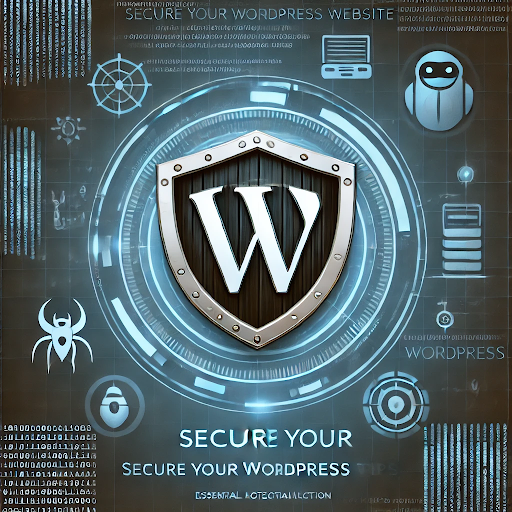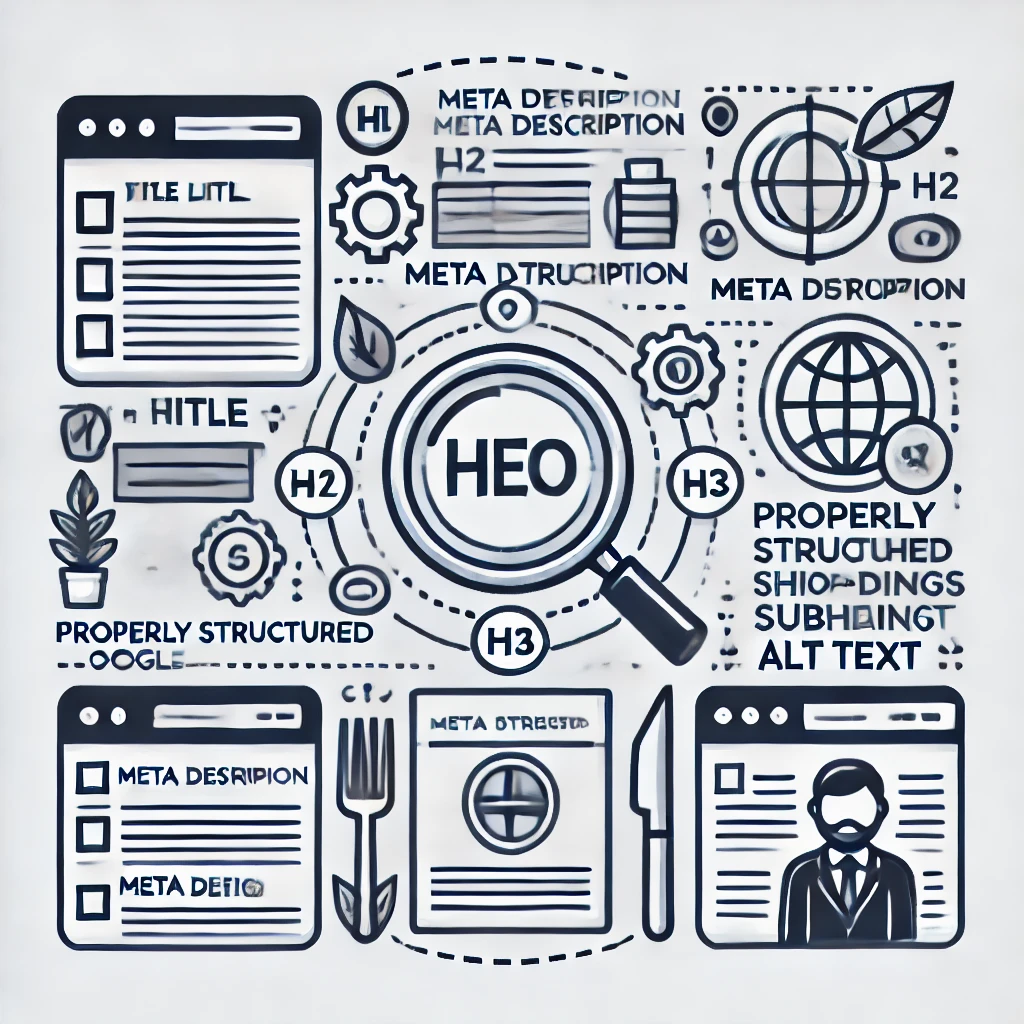Security Measures for WordPress Websites || Wordpress || AI
Security Measures for WordPress Websites: A Comprehensive Guide
Introduction
WordPress is the most popular content management system (CMS) in the world, powering over 40% of all websites on the internet. However, its popularity also makes it a prime target for hackers, malware, and cyberattacks. Without proper security measures, your WordPress website could be vulnerable to data breaches, defacement, or even complete shutdown.
In this blog, we’ll explore essential security measures to protect your WordPress website from threats. Whether you’re a beginner or an experienced developer, these steps will help you strengthen your site’s security and keep it safe from cybercriminals.
Why WordPress Security Matters
Before diving into security measures, let’s understand why securing your WordPress site is crucial:
Prevents Hacking & Malware Infections – Hackers exploit vulnerabilities to inject malicious code, steal data, or take control of your site.
Protects User Data – If your site collects sensitive information (emails, payment details, etc.), a breach can lead to legal consequences.
Maintains SEO Rankings – Google blacklists hacked websites, causing a drop in traffic and revenue.
Ensures Business Reputation – A compromised site damages trust with customers and clients.
Now, let’s explore the best security practices to safeguard your WordPress website.
1. Keep WordPress Core, Themes, and Plugins Updated
Outdated software is one of the most common reasons for WordPress hacks. Developers regularly release updates to patch security vulnerabilities.
How to Stay Updated?
Enable Automatic Updates (for minor releases):
// Add to wp-config.php define( 'WP_AUTO_UPDATE_CORE', true );
Manually Update Plugins & Themes – Check the dashboard regularly for pending updates.
Remove Unused Plugins & Themes – Delete inactive plugins/themes to reduce vulnerabilities.
2. Use Strong Passwords & Two-Factor Authentication (2FA)
Weak passwords are an easy entry point for hackers.
Best Practices for Password Security:
Use long, complex passwords (e.g.,
Xy7#2Pq9!Lm$instead ofadmin123).Avoid using common passwords like "password" or "123456".
Enable Two-Factor Authentication (2FA) – Requires a second verification step (e.g., SMS or Google Authenticator).
Recommended Plugins: Wordfence, Google Authenticator, Duo Two-Factor Auth.
3. Limit Login Attempts & Change Default Login URL
Brute force attacks occur when hackers try multiple username/password combinations to gain access.
How to Prevent Brute Force Attacks?
Limit Login Attempts – Use plugins like Login LockDown or Wordfence.
Change Default Login URL (from
/wp-adminto a custom path):Plugin: WPS Hide Login.
Disable XML-RPC (if not needed) – Used by hackers for brute force attacks.
4. Install a WordPress Security Plugin
A security plugin adds an extra layer of protection.
Top Security Plugins:
Wordfence – Firewall, malware scanner, and login security.
Sucuri Security – Malware removal, security hardening, and DDoS protection.
iThemes Security – 30+ security features including file integrity checks.
5. Use SSL/HTTPS Encryption
SSL (Secure Sockets Layer) encrypts data between the user’s browser and your server.
How to Enable SSL?
Get an SSL certificate (free via Let’s Encrypt or your hosting provider).
Force HTTPS by adding this to .htaccess:
RewriteEngine On RewriteCond %{HTTPS} off RewriteRule ^(.*)$ https://%{HTTP_HOST}%{REQUEST_URI} [L,R=301]
6. Regular Backups (Your Safety Net)
If your site gets hacked, a backup can restore it quickly.
Best Backup Practices:
Use automated backup plugins like UpdraftPlus, BlogVault, or Jetpack.
Store backups offsite (Google Drive, Dropbox, or AWS).
Test backups regularly to ensure they work.
7. Secure WordPress File Permissions
Incorrect file permissions can allow hackers to modify critical files.
Recommended File Permissions:
wp-config.php – 400 or 440 (most secure)
Directories (folders) – 755
Files – 644
Use an FTP client (like FileZilla) or run this command via SSH:
find /path/to/wordpress/ -type d -exec chmod 755 {} \; find /path/to/wordpress/ -type f -exec chmod 644 {} \;
8. Disable File Editing in WordPress Dashboard
By default, WordPress allows admins to edit theme/plugin files from the dashboard—a security risk if hackers gain admin access.
How to Disable It?
Add this to wp-config.php:
define( 'DISALLOW_FILE_EDIT', true );
9. Protect the wp-admin Directory
The wp-admin folder is the most targeted area for attacks.
How to Secure It?
Password-protect wp-admin via .htaccess:
AuthType Basic AuthName "Restricted Area" AuthUserFile /path/to/.htpasswd Require valid-user
Use Cloudflare or Sucuri firewall to block malicious IPs.
10. Monitor & Scan for Malware
Regular scans detect hidden malware or suspicious activity.
Best Scanning Tools:
Wordfence Scanner (free & premium)
Sucuri SiteCheck (online scanner)
MalCare (deep malware scanning)
11. Choose a Secure Hosting Provider
Not all hosting providers offer strong security.
What to Look for in a Host?
Web Application Firewall (WAF)
DDoS Protection
PHP & MySQL Updates
Isolated Account Environments (avoid shared hosting for sensitive sites)
Recommended Hosts: Kinsta, WP Engine, SiteGround, Cloudways.
12. Disable Directory Indexing
Hackers can browse directories if indexing is enabled.
How to Disable It?
Add this to .htaccess:
Options -Indexes
13. Change WordPress Database Prefix
Default database prefix (wp_) makes SQL injection attacks easier.
How to Change It?
Backup your database (critical step).
Edit wp-config.php:
$table_prefix = 'newprefix_';
Update tables using a plugin like WP-DBManager or manually via PHPMyAdmin.
14. Implement a Web Application Firewall (WAF)
A WAF blocks malicious traffic before it reaches your site.
Best WAF Options:
Cloudflare (free & paid plans)
Sucuri Firewall
Wordfence Firewall
15. Disable PHP Execution in Unused Directories
Prevents hackers from uploading malicious PHP files.
How to Block PHP Execution?
Create a .htaccess file in /wp-content/uploads/ with:
<Files *.php> deny from all </Files>
Conclusion
WordPress security is not a one-time task—it requires continuous monitoring and updates. By following these 15 security measures, you can significantly reduce the risk of cyberattacks and keep your website safe.
Quick Recap:
✅ Keep WordPress core, themes, and plugins updated.
✅ Use strong passwords & 2FA.
✅ Limit login attempts & change the default login URL.
✅ Install a security plugin (Wordfence, Sucuri, etc.).
✅ Enable SSL/HTTPS.
✅ Take regular backups.
✅ Secure file permissions & database.
✅ Use a secure hosting provider.
By implementing these steps, you’ll build a strong defense against hackers and ensure your WordPress site remains fast, secure, and reliable.
Stay safe and keep your WordPress site protected! 🚀
Would you like a checklist PDF of these security steps? Let me know in the comments!
#WordPress #WebSecurity #CyberSecurity #WordPressTips







Comments
Post a Comment